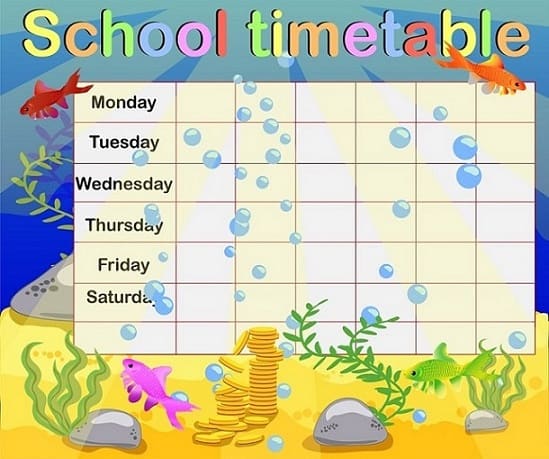Looking for an unbiased homeschool resource that doesn’t have a hidden agenda? You’ve come to the right place to learn how to homeschool in North Dakota.
To homeschool in North Dakota, a parent or guardian should become familiar with the state’s homeschooling laws and regulations. Families must decide on a curriculum that fits their needs and be prepared for the self-discipline required to maintain a robust academic schedule.

How to Homeschool in North Dakota
To homeschool in North Dakota, you will need to follow the state’s homeschooling laws and regulations. Here are the steps you can take to homeschool your child in North Dakota:
- Notify the local school district in writing that you will be homeschooling your child. This must be done within 30 days of starting homeschooling.
- Develop a plan for your homeschooling program. This should include the subjects you will be teaching, the materials you will be using, and the schedule you will follow.
- Teach the subjects required by North Dakota law, which include reading, language arts, math, science, social studies, and health.
- Keep records of your homeschooling activities, including attendance, coursework, and assessments.
- Have your child take standardized tests in grades 3, 5, 8, and high school. You can choose to use a nationally normed test or a state-approved alternative.
- Submit an annual evaluation to the local school district. This can be a portfolio of your child’s work, a progress report from a qualified evaluator, or a standardized test score.
It is important to note that homeschooling laws and regulations may vary from state to state, so it is important to familiarize yourself with the specific laws and requirements in North Dakota.

Free North Dakota Homeschool Programs
North Dakota offers initiatives to support homeschooling, making it an accessible, customized, and cost-effective way to provide education for children tailored to their needs.
In North Dakota, free homeschool programs provide access to learning materials and assistance from experienced homeschool educators via online resources and workshops.
In order to best meet the specific needs of each family, many programs provide a selection of various classes. These may include foundational subjects such as mathematics, reading, and writing, in addition to electives like art, music, and a foreign language.
Parents seeking a high-caliber, cost-efficient education for their children can look to free North Dakota homeschool programs.
The North Dakota Department of Public Instruction can provide extra guidance to homeschool parents in the state.
The Home School Legal Defense Association (HSLDA) is an invaluable resource for parents considering homeschooling their children in North Dakota, with updates on related laws and access to informative webinars and articles.
Between 2019 to 2020, the percentage of homeschooled students changed from 3.4% to 9%.
Does Homeschool Have to be Accredited in North Dakota?
In North Dakota, homeschooling is not mandated to be an accredited program. Parents must choose an educational plan for their students and track their progress with a portfolio of work as well as yearly assessments. Some parents, however, may choose to pursue an accredited curriculum for various reasons.
Attending an accredited program has several benefits. Your education will be seen as more credible and respectable by employers and universities.
Both public and homeschooled schools must fulfill state requirements, but joining a recognized association can be beneficial for families in organizing educational activities and keeping track of academic milestones.
67% of the homeschooled students successfully graduate from college.
North Dakota Accredited Homeschool Programs
To be accredited, homeschools must present enrollment and attendance proof, document grades, take an annual state-approved standardized test, have a qualified supervising teacher with a high school diploma or equivalent, and keep track of mandated curriculum updates.
Private schools must ensure they are meeting state laws and regulations involving compulsory attendance by including these requirements in their admission policies.
Homeschooling with an accredited program can provide children with a quality education in their own home environment.

Create a Designated Learning Place
Homeschoolers should have a specific area set aside for learning, to help establish a daily routine and provide an environment where their child can concentrate on schoolwork.
A dining table is an ideal spot for studying. It’s easily cleared off at the end of each day which allows it to be used for eating as well.
You can also provide your child with their own desk in their bedroom for added privacy and the opportunity to decorate it. Whatever you decide, be sure to create an environment that helps them focus on learning.
Over 300 million students were homeschooled as a result of the COVID-19 pandemic.
Stay On Track with a Daily Schedule
Sticking to a daily schedule for homeschooling has many advantages; here are some of them:
- Establishing a daily routine can help homeschoolers prioritize tasks, complete more in less time, and improve productivity. Families with multiple students or other outside commitments may particularly benefit from this strategy.
- Effective time management begins with planning. A daily schedule makes it easier to keep track of what needs to be done and when, and prevents feeling rushed or overwhelmed. Allocating specific blocks of time to tasks can help your family stay organized.
- Homeschooling can provide a sense of structure and regularity, especially beneficial for kids accustomed to attending a traditional school. This can make them feel safer and more prepared to learn.
- Families can benefit from daily schedules to stay accountable and meet their homeschooling objectives. This is important for those who tend to be easily distracted or delay their tasks.
- Having a daily schedule in place can facilitate better communication among family members, helping to avoid misunderstandings and building a stronger bond between them.

Ease Into It
Homeschooling for new parents can be a big shift, so it’s crucial to not apply excessive pressure from the start. It is best to ease into this transition and move forward at a steady pace.
Homeschooling parents can begin with just a few basic supplies and then build on their resources as they get more confident with the homeschooling process.
When it comes to homeschooling, there are numerous options, so you should find one that works best for your family. Don’t be afraid to venture out and experiment with different techniques; the less stressed you feel, the more successful your learning experience is likely to be.
Regardless of the educational level of their parents, homeschooled students score between 80% and 90%.
Involve Your Child in Setting Learning Goals
Involving your child in homeschool assignment planning and curriculum scheduling is important for several reasons:
- Offering students a sense of importance and ownership in their education will provide them with motivation and boost engagement.
- Involving them in the homeschool process will help them feel that they are part of it, rather than it being done to them.
- Getting your child involved in the homeschooling decision-making will give you a better understanding of their likes, talents, and shortcomings; allowing you to modify the learning environment to better accommodate them.
Generally, having your kid involved in homeschooling planning is key to a successful experience for everyone.

Explore Other Ways of Learning Outside the Classroom
Homeschooled kids have an advantage as they can explore many educational possibilities not found in a regular school. This helps them gain a diverse range of knowledge and experience, resulting in a more comprehensive education.
In many cases, homeschoolers benefit from strong connections in the community. These relationships can open doors to new learning opportunities, such as classes and workshops taught by experts or members of the community.
Parents who homeschool their children should seize these chances to broaden their kids’ education.
Homeschooling families can give their children a very enriching education by exploring different learning techniques.

Reach Out to Other Homeschool Families
Homeschooling can be difficult, especially for families without a support system. Luckily, there are various ways to make connections with other homeschoolers and build a community. One way is by connecting with local homeschooling organizations.
Homeschool groups can provide emotional support, practical advice from experienced homeschoolers, and opportunities for field trips and social interactions.
Joining an online forum or Facebook group is an excellent way to network with other homeschool parents.
Joining a parenting group can be helpful for exchanging resources, asking questions, and obtaining advice from parents who have the same experiences.
Making connections with other homeschooling families can help parents lessen the feeling of isolation and build a supportive environment for their kids.
When educated at home rather than in public schools, boys do 44% better on reading examinations.
Can Homeschooled Students Play Sports in North Dakota?
In North Dakota, homeschoolers are allowed to join in public school sports and after-school activities. They must follow the same rules as other students or may choose to play for approved nonpublic schools.
North Dakota Century Code 15.1-23-10 stipulates that all homeschoolers who wish to take part in public school activities must fulfill the following criteria:
- The student must be under twenty-one years of age.
- The student must not have been expelled from any school.
- The student’s parent or guardian must notify the superintendent of the district in which the student seeks to participate, in writing, of their intent to have the student participate.

How to Homeschool When Both Parents Work
North Dakota parents who opt to homeschool their children have to be creative with balancing work and school, as it is a difficult task.
With some ingenuity, it’s possible to work and homeschool at the same time. Let’s examine some pointers to help you achieve it.
Prior to February 2020, just 68% of parents who had homeschooled their children said it had been a success.
Get Your Childcare Involved
Some parents are lucky enough to have assistance in homeschooling while they’re away at work due to childcare.
When it’s not achievable or budget-friendly for all households, one should think outside the box to devise a plan that fits everyone’s needs.

Delegate Chores
Involving your children in household tasks is an effective method to reduce the strain you may be facing between work and homeschooling. It also provides them with an opportunity to learn about responsibility.
It’s prudent to be mindful of your child’s abilities. A five-year-old probably won’t be able to do the laundry, but they can lend a hand with things like dusting or laying the table.
As they age, give your children more chores. By involving them in household tasks, you can reduce your work while teaching them essential life skills.
Before the epidemic, 69% of homeschooled children expressed a desire to continue their studies in this manner for the upcoming school year.
You and Your Spouse Work Alternate Shifts
Balancing homeschooling with both parents working can be difficult, especially if you and your partner have alternating shifts. Here are some strategies to help make it work:
- It’s important to organize your week in advance by creating a schedule that includes all of your work hours and other responsibilities. This will help you plan effectively for homeschooling.
- Make use of online materials: Utilizing online components like lesson plans, videos, and virtual excursions can be a great way to supplement your kid’s schooling when you are not able to be with them in person.
- Be flexible with your homeschooling: If your daytime commitments don’t make 9 to 3 schooling feasible, think outside the box. For instance, you can do lessons at night or at the weekend. Or, break up the day into shorter chunks of time for educational activities.
- Ask for assistance: Don’t be scared to look for support when you need it. This could involve employing a tutor or nanny to aid with home-based instruction while you are busy, or requesting the aid of relatives and friends.
- Homeschoolers should be aware that it’s okay to take breaks. Finding a balance between work and homeschooling will help ensure that commitments are met on both fronts.
Homeschooling can be a tricky task if both parents are working. But it can be done with the right amount of planning and creativity, making it an enriching experience for the whole family.

Take Advantage of Online Curriculums
Homeschooling is a great option to personalize your child’s education, yet it can be difficult to fit work and school into one schedule. To make it easier, why not opt for an online curriculum?
Structured learning programs can assist your child in their development and ensure concentration while you are away.
Furthermore, online learning can be tailored to your child’s individual requirements, making it convenient to discover a course that suits their distinctive learning approach.
In their children’s upcoming academic year, 54% of parents who were homeschooling before February 2020 were likely to do so full-time.
Assign the Child Solo Activities to Do While You’re at Work
Parents in North Dakota who teach their kids at home must find ways to keep their children entertained while they are working. One way is to assign independent curriculum projects.
Tasks such as reading assignments, research projects, and math and writing exercises may be included.
It’s essential to select activities that are suitable for your child’s age and skill level.
If your child attends childcare, ask your provider to remind them to complete their homeschooling tasks daily.
Proper planning can help your child become independent and accomplish tough tasks during the workday.

Allow Yourself Flexibility and Grace
Balancing a job and homeschooling can be difficult for parents, so it’s vital to give yourself some leniency and kindness while managing these duties.
Striving for perfection is an unattainable goal that can lead to disappointment. Focus on the successes, no matter how small, and congratulate yourself on your achievements.
Keep in mind that your kids are observing you, and will take after you. By displaying a positive outlook and openness to change, they’ll be more likely to do the same.
Balancing work and homeschooling can be difficult, but it also presents an excellent opportunity to impart valuable lessons to your children. Show them how to be adaptable and graceful in any situation, setting them up for victory down the line.
The typical cost of homeschooling is between $350-$750 per year for the parent(s).
North Dakota Homeschool Curriculum Requirements
Homeschooled students in North Dakota have the freedom to determine their own curriculum, though instruction must be provided in key academic areas, including:
- Reading
- Writing
- Math
- Science
- Social studies
- Physical education
Homeschooling gives families the opportunity to tailor the learning experience to their child’s interests and style of learning.
By customizing their children’s curriculum, parents can use homeschooling as an effective way to educate North Dakota’s children.

Letter of Intent to Homeschool in North Dakota
Homeschooling families in North Dakota must submit a Letter of Intent to stay compliant with state laws.
Each year, the local school district must receive a Letter of Intent that includes the names and ages of all children who are being homeschooled.
In the letter, indicate when homeschooling is expected to start and finish.
Submitting a Letter of Intent is not mandatory everywhere, but it’s an effective way for homeschooling families to demonstrate that they are adhering to local laws and providing quality education for their children.
Filing a Letter of Intent is another way to safeguard the rights of homeschoolers if there are any legal issues.
The federal government saves $24 billion in taxpayer money thanks to homeschooling.
Is the North Dakota Homeschool Curriculum Free?
Many North Dakota families are selecting to teach their children at home for numerous causes. The cost of a curriculum is one of the major worries for homeschooling families. Thankfully, there are many places online to obtain free resources and curricula for homeschooling.
If you search online, you’ll find numerous websites with free homeschool resources, including lesson plans, worksheets, and comprehensive course materials.
Homeschooling families can take advantage of discounts or free memberships that are offered by many educational organizations.
With effort and dedication, it is possible to homeschool your children without spending a lot of money.

How Much Does It Cost to Homeschool in North Dakota?
The expense of homeschooling differs dramatically based on the strategy chosen by the guardians. Some opt to get educational materials from specific homeschooling services, while others settle for public materials.
When homeschooling, you must factor in the cost of textbooks, membership fees, and exams.
Despite the costs, homeschooling is sometimes worth it for families since tuition and other school fees can be saved.
Consequently, homeschooling in North Dakota is often affordable.
A safe environment was cited as the main motivation by 50% of parents who homeschool their children.
How Many Days Are Required for Homeschool in North Dakota?
North Dakota state law requires that students enrolled in a homeschool program attend for a minimum of 175 days each year and 4 hours each day of school. This includes the days when the student is actually receiving instruction, as well as holidays and vacations.
However, homeschooling parents are not required to adhere to the traditional school calendar, and they may choose to spread out their instruction over a longer period of time.
Homeschooling families are also not required to submit attendance records to the state, but they must keep attendance records on file in case they are ever requested by the authorities.
In short, homeschooling families in North Dakota have a great deal of flexibility when it comes to planning their instruction, but they must still make sure that their students receive a minimum of 175 days of instruction each year.

North Dakota Homeschool Record Keeping
Parents who homeschool their children in North Dakota are required by state law to keep certain records. These records include a log of the educational activities that take place, as well as a portfolio of the child’s work.
The purpose of these records is to document that the child is receiving an education that is equivalent to that of a public or private school.
Homeschooling parents are also required to submit an Annual Progress and Attendance Report to their local school district.
This report must be accompanied by the records mentioned above.
While keeping accurate records may seem like a daunting task, it is important to remember that they are a vital part of homeschooling in North Dakota.
Without them, parents would not be able to comply with state law and their children would not be able to receive a quality education at home.
Here are some things that are important to keep a record of during the homeschooling years:
- Test results
- Samples of your student’s academic work
- Documentation of the type of curriculum being provided to your child
- Dialog with state and/or school officials
- Attendance records
A good rule of thumb is to save these records for at least two years or longer if required.
Therefore, it is essential for homeschoolers in North Dakota to keep careful records of their educational activities.
Test results, extracurricular activities, and socialization were mentioned as reasons for homeschooling by 14% of the parents.
North Dakota Homeschool Diploma
For homeschooled students in North Dakota, earning a diploma can be an even greater accomplishment. Homeschooled kids don’t have the structure of a regular school schedule, so they have to be self-motivated and disciplined to do well. A high school diploma is a symbol of hard work and dedication.
Earning a diploma shows that they have what it takes to set goals and achieve them.
In addition, a diploma for North Dakota homeschoolers can open up new opportunities, such as colleges and scholarships.
For homeschooled students, a high school diploma is an important milestone on the road to success.
As of February 2020, at least 9 million Americans had been homeschooled at least once.
How Does a Homeschooled Student Get a Diploma?
According to the North Dakota Department of Public Instruction, homeschooled students have the option of receiving their diploma through their school district of residence, an approved nonpublic high school, or the North Dakota Center for Distance Education.
Each of these options has its own set of requirements and procedures that must be followed in order to receive a diploma.
For example, school districts may require home-educated students to complete a certain number of credits in order to receive a diploma.
Alternatively, approved nonpublic high schools may issue diplomas to home-educated students who have satisfactorily completed their courses.
North Dakota Center for Distance Education issues diplomas to home-educated students who have successfully completed the required assessments.
Ultimately, it is up to the local school board to determine which option is best for each individual student.
However, all three options provide homeschooled students with the opportunity to obtain a high school diploma.
Before COVID-19, 42% of parents said they wished their kids had more freedom to pursue their hobbies.
Are Homeschool Diplomas Valid?
The homeschooling movement has been growing steadily recently, as more parents opt to educate their children at home. While homeschooling can provide a number of benefits, there is one potential drawback: homeschool diplomas may not be as recognized by colleges or employers.
Some institutions may require additional testing or coursework for homeschooled students, so students should be prepared to take some tests to show their level of academics.
It’s not uncommon whatsoever for homeschooled kids to be more academically advanced than their peers who attended a public school, so in the long run, homeschoolers are quite capable of holding the advantage.
However, it is important to note that homeschool diplomas are becoming increasingly common and should be accepted by most colleges and employers.
Disclaimer
Although the information in this article was researched with the utmost integrity and sincerity, it cannot be held legally liable or expected to take the place of legitimate legal advice for your specific situation.

Trina Greenfield, Author
SmackDown Media LLC
LinkedIn
About the Author:
Trina Greenfield, the owner of SmackDown Media LLC, is passionate about providing information to those considering their educational options. Trina is a seasoned writer, content creator, and website owner with a passion for unbiased research, educational platforms for children and adults, as well as all things family-related.